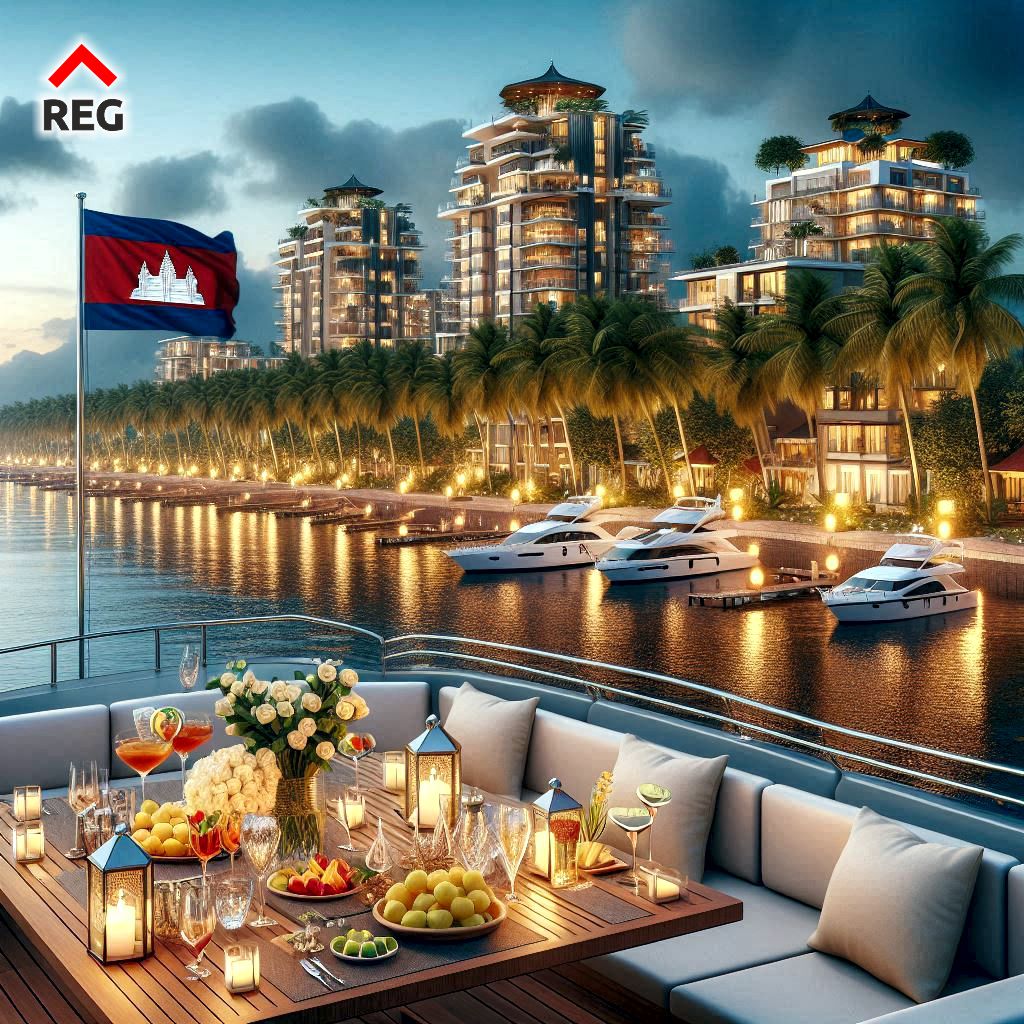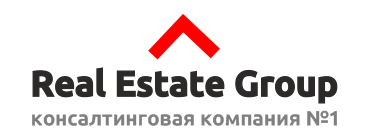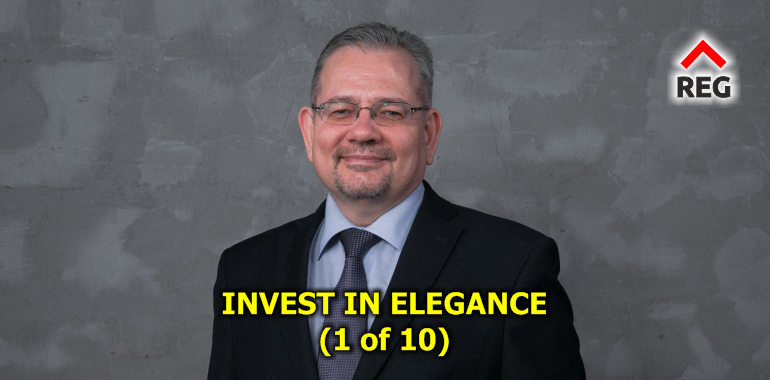YouTube
Podcasts
Apple Podcasts | Spotify |Yandex Music | VK | SoundStream | Deezer | Castbox | Overcast | Pocket Casts | Podcast Addict| MAVE
Want to Buy Real Estate in Cambodia? Write a Request in WhatsApp and We Will Find the Best Options For You. Everyone Buys From Us!
Part 1. Kingdom of Cambodia.
Introduction: Embrace the Enchantment of Cambodia.
Welcome to the Kingdom of Cambodia, a land where ancient traditions blend seamlessly with modern aspirations. Nestled in the heart of Southeast Asia, Cambodia is a country of captivating contrasts and boundless opportunities. From its lush landscapes and vibrant cities to its rich cultural heritage and dynamic economy, Cambodia offers a unique and inspiring environment for those seeking a new place to call home.
Imagine waking up to the golden hues of sunrise over the majestic Angkor Wat, exploring the bustling markets of Phnom Penh, or relaxing on the pristine beaches of Sihanoukville. Cambodia is not just a destination; it’s a journey of discovery, where every corner reveals a story and every experience leaves a lasting impression.
As you consider investing in real estate in this enchanting country, you’ll find that Cambodia’s appeal goes beyond its natural beauty and historical treasures. The nation’s robust economic growth, favorable investment climate, and welcoming community make it an ideal place for foreign nationals to settle and thrive. Whether you’re drawn to the vibrant urban life, the serene countryside, or the coastal charm, Cambodia has something to offer everyone.
In this article, we will delve into the heart of Cambodia, exploring its geography, climate, economy, and the diverse opportunities it presents. We’ll guide you through the process of obtaining visas and residence permits, highlight the thriving tourism sector, and provide an in-depth look at the real estate market. Our journey will take us through the dynamic districts of Phnom Penh, each offering its own unique blend of lifestyle, culture, and investment potential.
Join Real Estate Group to discover the magic of Cambodia and understand why this remarkable country is the perfect place to invest in your future. Whether you’re seeking a luxurious urban residence, a tranquil retreat, or a promising investment, Cambodia welcomes you with open arms and endless possibilities. If you have any questions about Cambodia, feel free to ask us on WhatsApp!
Chapter 1: Location of Cambodia.

Real Estate Group offers a detailed look at Cambodia's territory and boundaries, geography and topography, inland waters, climate, weather, nature, population, languages, religion, infrastructure and transportation as of 2024:
Territory and Borders.
The Kingdom of Cambodia is located in Southeast Asia, bordered by Thailand to the west and northwest, Laos to the north, Vietnam to the east and southeast, and the Gulf of Thailand to the southwest. The country covers an area of approximately 181,035 square kilometers.
Geography and Relief.
Cambodia’s landscape is characterized by a central lowland region surrounded by uplands and low mountains. The central plain, which includes the Tonlé Sap Basin and the lower Mekong River floodplains, is the heart of the country. The Cardamom Mountains and the Dâmrei Mountains dominate the southwest, while the eastern highlands and the Dangrek Mountains form natural borders with Vietnam and Thailand.
Inland Waters.
Cambodia is rich in water resources, with the Mekong River being the most significant. The Mekong flows through the country for over 500 kilometers, providing vital water for agriculture and daily life. The Tonlé Sap Lake, the largest freshwater lake in Southeast Asia, is another crucial water body, expanding and contracting dramatically with the seasons. The Bassac River and numerous smaller rivers and streams also crisscross the country.
Climate.
Cambodia has a tropical monsoon climate, characterized by two distinct seasons: the rainy season from May to October and the dry season from November to April. The southwest monsoon brings heavy rains and high humidity during the rainy season, while the northeast monsoon brings cooler, drier air during the dry season.
Weather Throughout the Year:
- Air Temperature: The average temperature ranges from 21°C (70°F) to 35°C (95°F). The hottest months are April and May, with temperatures often reaching up to 40°C (104°F). The coolest month is January, with average temperatures around 26°C (79°F).
- Water Temperature: Coastal waters remain warm throughout the year, averaging between 28°C (82°F) and 30°C (86°F).
- Precipitation: Annual rainfall varies significantly across the country, from about 1,300 mm (51 inches) in the central plains to over 5,000 mm (197 inches) in the mountainous regions.
Wildlife and Ecology.
Cambodia boasts a rich biodiversity, with numerous protected areas and national parks. The Cardamom Mountains and the Tonlé Sap floodplain are particularly notable for their unique ecosystems. The country is home to a variety of wildlife, including endangered species such as the Asian elephant, tiger, and Irrawaddy dolphin. Mangrove forests along the coast and extensive wetlands provide critical habitats for many species.
Population at the End of 2023.
As of the end of 2023, Cambodia’s population was estimated to be approximately 16.94 million people. The population is predominantly young, with a significant proportion under the age of 30.
Languages.
The official language of Cambodia is Khmer, spoken by nearly 90% of the population. French and English are also widely spoken, especially in business and tourism sectors. Minority languages include Cham, Vietnamese, and various indigenous languages.
Religion.
Theravada Buddhism is the state religion and is practiced by about 97% of the population. Other religions include Islam, Christianity, and animism, practiced by various ethnic minorities.
Infrastructure and Transportation.
Cambodia’s infrastructure has seen significant improvements in recent years, though challenges remain. The country has an extensive road network, with major highways connecting Phnom Penh to other key cities and neighboring countries. The rail network, though limited, is being expanded and modernized. Cambodia has three international airports: Phnom Penh, Siem Reap, and Sihanoukville, facilitating both domestic and international travel. Ports in Phnom Penh and Sihanoukville play crucial roles in trade and transportation.
If you have any questions about Cambodia locations, feel free to ask us on WhatsApp!
Chapter 2: The Economy of Cambodia.

Real Estate Group offers a data-driven look at aspects of Cambodia's economy:
Economy as of 2024 and Forecast for the Next 5 Years.
As of 2024, Cambodia’s economy is demonstrating robust growth, with a projected GDP increase of 5.6%. This growth is driven by a resurgence in key sectors such as tourism, garment manufacturing, and non-garment exports, including electronics and auto parts. The Asian Development Bank (ADB) forecasts that Cambodia’s economy could grow by 5.8% in 2024, potentially reaching 6.0% by 2025.
Over the next five years, Cambodia’s economic outlook remains positive, supported by continued foreign investment, infrastructure development, and diversification of its industrial base. The government’s focus on enhancing the business environment and attracting foreign direct investment (FDI) is expected to further bolster economic growth. Key sectors such as construction, real estate, and agriculture are also anticipated to contribute significantly to the economy.
Major Industries and Special Economic Zones.
Cambodia’s economy is underpinned by several major industries:
1. Garment and Textile Industry: This sector remains the largest contributor to Cambodia’s exports, accounting for a significant portion of the country’s GDP. The industry employs a large workforce and continues to attract foreign investment.
2. Tourism: Tourism is a vital sector, with Cambodia’s rich cultural heritage and natural beauty drawing millions of visitors annually. The sector has rebounded strongly post-pandemic, contributing to economic recovery.
3. Agriculture: Agriculture remains a cornerstone of the Cambodian economy, with rice being the primary crop. Other significant agricultural products include rubber, cassava, and various fruits.
4. Construction and Real Estate: This sector has seen substantial growth, driven by both domestic and foreign investment. Major urban centers like Phnom Penh are experiencing a construction boom, with numerous residential and commercial projects underway.
5. Manufacturing: Beyond garments, Cambodia is diversifying into electronics, automotive parts, and other light manufacturing industries. This diversification is supported by the establishment of Special Economic Zones (SEZs).
Special Economic Zones (SEZs): Cambodia has established numerous SEZs to attract foreign investment and promote industrial development. These zones offer various incentives, including tax exemptions, streamlined customs procedures, and infrastructure support. Notable SEZs include the Phnom Penh SEZ, Sihanoukville SEZ, and Manhattan SEZ.
Trade Partners.
Cambodia’s trade relationships are crucial to its economic health. The country’s major trade partners include:
1. United States: The US is a significant market for Cambodian exports, particularly garments and textiles.
2. China: China is both a major export destination and a key source of imports, including machinery, electronics, and construction materials.
3. Vietnam: Vietnam is an important trade partner, with significant cross-border trade in agricultural products and manufactured goods.
4. Thailand: Thailand is another key partner, particularly for imports of consumer goods and raw materials.
5. European Union: The EU is a major market for Cambodian exports, benefiting from preferential trade agreements.
Political Support and Stability.
Cambodia’s political landscape is dominated by the Cambodian People’s Party (CPP), which has maintained power for over three decades. The transition of power from long-time Prime Minister Hun Sen to his son, Hun Manet, in 2023 has been smooth, ensuring continuity in governance. Despite challenges such as corruption and limited political freedoms, the government has managed to maintain relative stability, which is crucial for economic growth.
The government has implemented various policies to support economic development, including the Law on Investment and Competition, which aims to create a more favorable business environment. Efforts to improve infrastructure, education, and healthcare are also ongoing, contributing to long-term economic stability.
Currencies in Cambodia.
Cambodia uses two main currencies: the Cambodian Riel (KHR) and the US Dollar (USD). The Riel is the official currency, but the US Dollar is widely accepted and used for most transactions, especially in urban areas and for larger purchases:
- Cambodian Riel (KHR): The Riel is used primarily for smaller transactions and in rural areas. The exchange rate typically hovers around 4,000 KHR to 1 USD.
- US Dollar (USD): The Dollar is the preferred currency for most business transactions, tourism, and larger purchases. It is accepted almost everywhere, and prices are often quoted in USD.
The dual-currency system provides stability and convenience, particularly for foreign investors and tourists. However, the government is making efforts to promote the use of the Riel to strengthen the national currency and reduce dependency on the Dollar. If you have any questions about Cambodia's economy, feel free to ask us on WhatsApp!
Chapter 3: Foreign Investment in Cambodia.

Real Estate Group proposes to study foreign investment in Cambodia over the last 6 years (2019-2024):
Overview.
Foreign Direct Investment (FDI) has played a crucial role in Cambodia’s economic development over the past five years. The country has seen a steady influx of foreign capital, driven by investor-friendly policies, strategic location, and a growing market. From 2019 to 2024, Cambodia has attracted significant investments in various sectors, contributing to its economic resilience and growth.
FDI Trends (2019-2024):
- 2019: Cambodia received approximately $3.66 billion in FDI, marking a 14.02% increase from the previous year. This growth was primarily driven by investments in the garment and textile industry, construction, and real estate.
- 2020: Despite the global economic downturn caused by the COVID-19 pandemic, Cambodia managed to attract $3.62 billion in FDI, a slight decline of 1.05% from 2019. The pandemic impacted tourism and manufacturing sectors, but the construction and real estate sectors remained robust.
- 2021: FDI inflows slightly decreased to $3.48 billion, reflecting a 3.9% decline from 2020. The government introduced measures to support businesses and attract investment, focusing on infrastructure development and digital economy initiatives.
- 2022: Cambodia saw a rebound in FDI, with inflows reaching $3.58 billion, a 2.74% increase from the previous year. The recovery was driven by renewed interest in the tourism sector, manufacturing, and the establishment of new Special Economic Zones (SEZs).
- 2023: FDI continued to grow, with inflows estimated at around $3.7 billion. Key sectors attracting investment included renewable energy, technology, and agriculture.
- 2024: The positive trend is expected to continue, with projections indicating FDI inflows could reach $3.8 billion. The government’s ongoing efforts to improve the business environment and infrastructure are likely to attract more foreign investors.
Major Industries Attracting FDI:
1. Garment and Textile Industry: This sector remains a major attraction for foreign investors due to Cambodia’s competitive labor costs and preferential trade agreements with major markets like the US and EU.
2. Construction and Real Estate: The construction boom in urban centers, particularly Phnom Penh, has drawn significant foreign investment. High-rise buildings, residential complexes, and commercial properties are being developed to meet the growing demand.
3. Tourism: Cambodia’s rich cultural heritage and natural beauty continue to attract tourists and investors. Investments in hotels, resorts, and tourism infrastructure have been substantial.
4. Agriculture: Foreign investors are increasingly interested in Cambodia’s agricultural sector, focusing on crops like rice, rubber, and cassava. Investments in agro-processing and export-oriented agriculture are also growing.
5. Renewable Energy: With a focus on sustainable development, Cambodia has attracted investments in solar, wind, and hydropower projects.
6. Technology and Digital Economy: The government’s push towards a digital economy has led to increased investments in IT infrastructure, e-commerce, and fintech.
Special Economic Zones (SEZs).
Cambodia has established several SEZs to attract foreign investment by offering incentives such as tax breaks, streamlined customs procedures, and improved infrastructure. Notable SEZs include:
- Phnom Penh SEZ: A major hub for manufacturing and logistics, attracting investments from Japan, China, and other countries.
- Sihanoukville SEZ: Focused on heavy industries and manufacturing, with significant Chinese investment.
- Manhattan SEZ: Located in Svay Rieng province, this SEZ is attracting investments in electronics, automotive parts, and other light manufacturing industries.
Trade Partners.
Cambodia’s strategic location and trade agreements have facilitated strong trade relationships with several key partners:
- China: The largest source of FDI in Cambodia, with investments in infrastructure, real estate, and manufacturing.
- South Korea: Significant investments in the garment industry, real estate, and infrastructure projects.
- Japan: Investments in manufacturing, particularly in the automotive and electronics sectors.
- European Union: A major market for Cambodian exports, particularly garments and agricultural products.
- United States: Key trade partner, especially for garment exports.
Political Support and Stability.
The Cambodian government has implemented various policies to attract and retain foreign investment. Key initiatives include:
- Investment Law: The new Law on Investment, enacted in 2021, offers incentives such as tax holidays, duty exemptions, and streamlined procedures for investors.
- Infrastructure Development: Significant investments in roads, bridges, ports, and airports to improve connectivity and support economic growth.
- Digital Economy Framework: The government’s focus on developing a digital economy has led to investments in IT infrastructure and e-commerce.
Political stability, under the leadership of the Cambodian People’s Party (CPP), has also been a key factor in attracting foreign investment. The smooth transition of power to Hun Manet in 2023 has ensured continuity in governance and economic policies.
Currencies in Cambodia.
Cambodia operates a dual-currency system, using both the Cambodian Riel (KHR) and the US Dollar (USD). This system provides stability and convenience for foreign investors and tourists:
- Cambodian Riel (KHR): Used primarily for smaller transactions and in rural areas. The exchange rate is approximately 4,000 KHR to 1 USD.
- US Dollar (USD): Widely accepted for most transactions, especially in urban areas and for larger purchases.
The government is promoting the use of the Riel to strengthen the national currency and reduce dependency on the Dollar.
If you have any questions about foreign investment in Cambodia, feel free to ask us on WhatsApp!
Chapter 4: Visas to Cambodia.

Real Estate Group offers to find out what visas are available to enter Cambodia, the procedure for obtaining them and the cost as of 2024:
Types of Visas.
Cambodia offers several types of visas to accommodate different purposes of stay. The main categories include:
1. Tourist Visa (T Visa):
- Purpose: For short-term tourism.
- Validity: 30 days.
- Cost: $30 + $6 processing fee.
- Extension: Can be extended once for an additional 30 days for $40-$50.
2. Ordinary Visa (E Visa):
- Purpose: For longer stays, including business, employment, and other purposes.
- Validity: 30 days.
- Cost: $35 + $7 processing fee.
- Extension: Can be extended for 1, 3, 6, or 12 months.
3. eVisa:
- Purpose: For tourists applying online.
- Validity: 30 days.
- Cost: $30 + $6 processing fee.
- Processing Time: 3 business days.
4. Business Visa (EB Visa):
- Purpose: For business activities.
- Validity: Initially 30 days, extendable.
- Extension: 1, 3, 6, or 12 months with a work permit.
- Cost: $180-$300 for extensions.
5. Student Visa (ES Visa):
- Purpose: For students enrolled in Cambodian educational institutions.
- Validity: Initially 30 days, extendable.
- Extension: Requires proof of enrollment.
6. Retirement Visa (ER Visa):
- Purpose: For retirees.
- Validity: Initially 30 days, extendable.
- Extension: Requires proof of retirement and financial means.
7. Looking for Work Visa (EG Visa):
- Purpose: For those seeking employment.
- Validity: 1, 3, or 6 months.
- Extension: Not renewable; must switch to EB Visa.
Long-Term Visas and Investor Visas for Real Estate Buyers.
For foreign nationals interested in long-term stays or investing in real estate, Cambodia offers several options:
1. Long-Term Ordinary Visa (E Visa) Extensions:
- Purpose: For extended stays beyond the initial 30 days.
- Extension Options: 6 or 12 months.
- Cost: $180-$300 depending on the duration.
- Process: Obtain an Ordinary Visa on arrival, then extend through a visa agency or at the immigration office.
2. Cambodia My Second Home (CM2H) Visa:
- Purpose: For investors in real estate.
- Investment Requirement: Minimum $100,000 in approved real estate.
- Validity: 10 years, renewable.
- Benefits: Eligibility to apply for Cambodian citizenship after 5 years.
- Process: Apply through the CM2H program, providing proof of investment and other required documents.
Residence Permits for Real Estate Buyers.
While Cambodia does not offer a direct residency-by-investment program solely for real estate purchases, the CM2H visa provides a pathway to long-term residency and potential citizenship:
1. CM2H Visa:
- Eligibility: Foreign nationals investing at least $100,000 in Cambodian real estate.
- Validity: 10-year residency permit, renewable.
- Citizenship Pathway: After 5 years of residency, investors can apply for Cambodian citizenship.
2. Business Visa (EB Visa):
- Purpose: For business activities, including real estate investment.
- Validity: Initially 30 days, extendable for up to 12 months.
- Extension Requirements: Proof of business activities and a work permit.
Process, Terms, and Costs of Visas.
1. Tourist Visa (T Visa):
- Application: Online or on arrival.
- Documents: Passport, photo, application form.
- Cost: $30 + $6 processing fee.
- Processing Time: Immediate on arrival, 3 business days online.
2. Ordinary Visa (E Visa):
- Application: On arrival.
- Documents: Passport, photo, application form.
- Cost: $35 + $7 processing fee.
- Processing Time: Immediate on arrival.
3. Long-Term Visa Extensions:
- Application: Through visa agencies or immigration office.
- Documents: Passport, current visa, application form, additional documents depending on visa type.
- Cost: $180-$300 depending on duration.
- Processing Time: Varies, typically a few days.
4. CM2H Visa:
- Application: Through the CM2H program.
- Documents: Proof of investment, passport, application form, additional documents as required.
- Cost: Investment of at least $100,000 in real estate.
- Processing Time: Varies, typically a few weeks.
If you have any questions about Cambodia visas, feel free to ask us on WhatsApp!
Chapter 5: Residence Permits in Cambodia.

Real Estate Group suggests exploring what residency permits are available in Cambodia, the rules for obtaining them, and their value as of 2024:
Types of Residence Permits.
Cambodia offers several types of residence permits to accommodate various needs and circumstances of foreign nationals. The main types include:
1. Temporary Residence Permit:
- Purpose: For individuals planning to stay in Cambodia for a limited period, such as for work, study, or other temporary purposes.
- Validity: Typically issued for 1 to 2 years, renewable.
2. Permanent Residence Permit:
- Purpose: For individuals who have been residing in Cambodia for an extended period and wish to make the country their permanent home.
- Validity: Indefinite, subject to renewal conditions.
3. Business Visa (Type EB):
- Purpose: For individuals investing in or operating a business in Cambodia.
- Validity: Initially 30 days, extendable for 1, 3, 6, or 12 months.
- Extension Requirements: Requires a work permit and proof of business activities.
4. Retirement Visa (Type ER):
- Purpose: For retirees wishing to live in Cambodia.
- Validity: Initially 30 days, extendable for 6 or 12 months.
- Extension Requirements: Proof of retirement and financial means to support oneself.
Application Process.
The application process for residence permits in Cambodia involves several steps:
1. Gather Required Documents:
- Valid Passport: Must have at least six months of validity remaining.
- Passport-Sized Photos: Recent photos meeting specified guidelines.
- Application Form: Completed and signed.
- Proof of Financial Stability: Bank statements or other financial documents.
- Health Insurance: Proof of health insurance coverage in Cambodia.
- Clean Criminal Record: Police clearance certificate from the home country or any other country of residence.
- Letter of Intent: Explaining the purpose of residency and plans while in Cambodia.
2. Submit Application:
- Where to Apply: Applications can be submitted at the Cambodian embassy or consulate in the applicant’s home country, or directly at the immigration office in Cambodia.
- Application Fee: Fees vary depending on the type and duration of the permit.
3. Processing Time:
- Temporary Residence Permit: Typically processed within 2 to 4 weeks.
- Permanent Residence Permit: Processing can take several months, as it involves more thorough background checks and documentation.
4. Approval and Issuance:
- Once approved, the residence permit will be issued, and the applicant will be notified to collect their permit.
Costs.
The cost of obtaining a residence permit in Cambodia varies based on the type and duration of the permit:
1. Temporary Residence Permit:
- Cost: Ranges from $100 to $200 per year.
- Processing Fee: Additional $5 processing fee.
2. Permanent Residence Permit:
- Cost: Approximately $300 to $500, depending on the specific circumstances and duration.
- Processing Fee: Additional $5 processing fee.
3. Business Visa (Type EB):
- Cost: Extension fees range from $180 to $300, depending on the duration (1, 3, 6, or 12 months).
- Work Permit Fee: Additional $100 to $150 per year.
4. Retirement Visa (Type ER):
- Cost: Extension fees range from $180 to $300, depending on the duration (6 or 12 months).
Additional Notes:
- Consultation: It is advisable to consult with a legal expert or immigration specialist to ensure all requirements are met and to facilitate the application process.
- Renewal: Residence permits must be renewed before expiration to avoid penalties or legal issues.
- Changes in Regulations: Immigration laws and regulations can change, so it is important to stay updated on the latest requirements and procedures.
If you need more information on Cambodia residence permit, feel free to ask us on WhatsApp!
Chapter 6: Tourism in Cambodia.

Real Estate Group offers fascinating information on tourism to Cambodia from 2019 to 2024 highlighting the main tourist attractions:
Overview.
Tourism has been a vital sector for Cambodia, significantly contributing to its economy. The period from 2019 to 2024 has seen both challenges and remarkable recovery, especially in the wake of the COVID-19 pandemic. The Cambodian government and private sector have worked diligently to revive and enhance the tourism industry, making it a key driver of economic growth.
Tourism Statistics (2019-2024):
- 2019: Cambodia welcomed approximately 6.61 million international tourists. The tourism sector contributed around 12.1% to the GDP, with major attractions being Angkor Wat, Phnom Penh, and the coastal areas.
- 2020: The COVID-19 pandemic severely impacted tourism, with international arrivals plummeting to about 1.3 million, an 80.2% decrease from 2019. The sector’s contribution to GDP dropped significantly.
- 2021: The number of international tourists further declined to around 196,495 due to ongoing travel restrictions.
- 2022: A gradual recovery began, with 2.28 million international tourists visiting Cambodia, marking a 1058.6% increase from 2021.
- 2023: The recovery accelerated, with 5.45 million international tourists, a 139.5% increase from the previous year. The tourism sector’s contribution to GDP rose to 7.5%.
- 2024: Projections indicate that Cambodia will receive around 6 million international tourists, nearing pre-pandemic levels.
Key Developments and Initiatives.
1. Digital Campaigns and Marketing:
- The Cambodian Ministry of Tourism has partnered with Visa Worldwide Pte Limited to boost tourism through digital campaigns and marketing initiatives. These efforts aim to attract more international visitors by promoting Cambodia’s rich cultural heritage and natural beauty.
2. Infrastructure Improvements:
- Significant investments have been made in improving tourism infrastructure, including the expansion of airports, upgrading of roads, and development of new tourist facilities. The Sihanoukville International Airport and Siem Reap International Airport have undergone major upgrades to handle increased tourist traffic.
3. Sustainable Tourism:
- The government has focused on promoting sustainable tourism practices to preserve Cambodia’s natural and cultural heritage. Initiatives include eco-tourism projects, conservation efforts, and community-based tourism programs.
4. Cultural and Heritage Tourism:
- Cambodia continues to leverage its rich cultural heritage, with Angkor Wat remaining a top attraction. The government has also promoted lesser-known sites such as Preah Vihear, Sambor Prei Kuk, and the Cardamom Mountains.
5. Health and Safety Measures:
- In response to the pandemic, Cambodia implemented stringent health and safety protocols to ensure the safety of tourists. These measures have helped restore confidence among international travelers.
Major Tourist Attractions.
1. Angkor Wat:
- The iconic temple complex in Siem Reap remains the most visited site in Cambodia. It attracts millions of tourists annually, drawn by its historical significance and architectural grandeur.
2. Phnom Penh:
- The capital city offers a blend of historical and modern attractions, including the Royal Palace, National Museum, and vibrant markets.
3. Sihanoukville:
- Known for its beautiful beaches and islands, Sihanoukville is a popular destination for both relaxation and adventure tourism.
4. Tonlé Sap Lake:
- The largest freshwater lake in Southeast Asia, Tonlé Sap is renowned for its floating villages and unique ecosystem.
5. Kampot and Kep:
- These coastal towns are famous for their colonial architecture, pepper plantations, and seafood.
Tourism Sector Challenges.
1. COVID-19 Pandemic:
- The pandemic caused a significant downturn in international arrivals, impacting businesses and employment in the tourism sector. Recovery efforts have been focused on rebuilding the industry and ensuring health and safety.
2. Infrastructure Development:
- While significant progress has been made, ongoing infrastructure development is needed to support the growing number of tourists and enhance their experience.
3. Sustainable Tourism:
- Balancing tourism growth with environmental conservation remains a challenge. Efforts are being made to promote eco-friendly practices and reduce the environmental impact of tourism.
Future Outlook (2024 and Beyond).
The future of tourism in Cambodia looks promising, with several initiatives and projects in the pipeline:
1. Increased International Arrivals:
- With the easing of travel restrictions and successful vaccination campaigns, international tourist arrivals are expected to continue rising, potentially surpassing pre-pandemic levels by 2025.
2. New Tourist Destinations:
- The government is promoting new tourist destinations to diversify the tourism offerings and reduce pressure on popular sites like Angkor Wat.
3. Digital Transformation:
- Continued investment in digital marketing and online platforms will enhance Cambodia’s visibility and attract more tech-savvy travelers.
4. Sustainable Practices:
- Emphasis on sustainable tourism will help preserve Cambodia’s natural and cultural heritage for future generations.
5. Regional Cooperation:
- Strengthening regional cooperation with neighboring countries will boost cross-border tourism and create new opportunities for growth.
If you need more information about tourism in Cambodia or have any questions, feel free to ask us on WhatsApp!
Chapter 7: Cambodia Real Estate Market.

Real Estate Group offers a look at many aspects of the real estate market in Cambodia from 2019 to 2024.
Residential and Commercial Real Estate Construction Volumes.
From 2019 to 2024, Cambodia’s real estate market has experienced significant growth, driven by both residential and commercial construction. The construction sector’s value reached $11.6 billion in 2023, with an annual average growth rate (AAGR) of over 6% projected for 2025-2028:
- Residential Construction: This sector has seen substantial development, particularly in urban areas like Phnom Penh and Siem Reap. High-rise condominiums, gated communities, and luxury villas have been in high demand. The residential real estate market is projected to reach a volume of $556.20 billion by 2024.
- Commercial Construction: The commercial sector includes office buildings, retail spaces, hotels, and mixed-use developments. Significant projects include the expansion of office spaces in Phnom Penh, with an estimated 215,000 square meters added in 2023 alone. The commercial real estate market is also expected to grow, driven by increased foreign investment and economic recovery post-pandemic.
The Value of Real Estate.
The value of real estate in Cambodia has shown a steady increase over the past five years. The overall real estate market is projected to reach $601.50 billion by 2024. Key factors contributing to this growth include:
- Urbanization: Rapid urbanization has led to increased demand for residential and commercial properties in major cities.
- Foreign Investment: Significant foreign investments, particularly in luxury condominiums and commercial properties, have driven up property values.
- Economic Growth: Cambodia’s economic growth has bolstered the real estate market, with rising incomes and a growing middle class contributing to higher property values.
Major Buyers of Real Estate by Country.
Foreign buyers have played a crucial role in Cambodia’s real estate market. The major countries investing in Cambodian real estate include:
- China: Chinese investors are the largest group of foreign buyers, attracted by Cambodia’s favorable investment policies and high returns on investment.
- South Korea: South Korean investors have shown significant interest in both residential and commercial properties, particularly in Phnom Penh.
- Japan: Japanese investments are primarily focused on commercial real estate and infrastructure projects.
- United States and Europe: Investors from the US and Europe are also active in the market, particularly in the luxury property segment.
How Cambodia’s Leadership is Promoting Construction Growth.
The Cambodian government has implemented several initiatives to promote construction growth and attract foreign investment:
1. Investment Incentives: The government offers various incentives, including tax holidays, duty exemptions, and streamlined procedures for investors.
2. Infrastructure Development: Significant investments in infrastructure, such as roads, bridges, and airports, have improved connectivity and supported real estate development.
3. Special Economic Zones (SEZs): The establishment of SEZs has attracted foreign investment by offering favorable conditions for businesses.
4. Regulatory Reforms: The introduction of the new Law on Investment in 2021 has created a more favorable business environment, encouraging both domestic and foreign investment.
5. Construction Exhibitions: Events like CAMBUILD 2024 provide a platform for industry leaders, investors, and innovators to collaborate and drive growth in the construction sector.
Prospects of the Real Estate Market for the Next 5-10 Years.
The outlook for Cambodia’s real estate market over the next 5-10 years is positive, with several factors contributing to sustained growth:
1. Continued Urbanization: The ongoing urbanization trend will drive demand for residential and commercial properties in major cities.
2. Foreign Investment: Continued foreign investment, particularly from China, South Korea, and Japan, will support market growth.
3. Economic Growth: Cambodia’s economic growth is expected to remain robust, further boosting the real estate market.
4. Sustainable Development: Increasing focus on sustainable and eco-friendly buildings will attract environmentally conscious investors and buyers.
5. Digital Transformation: The adoption of digital technologies in real estate transactions and marketing will enhance market efficiency and transparency.
Overall, Cambodia’s real estate market is poised for significant growth, driven by strong economic fundamentals, favorable investment conditions, and proactive government policies. If you need more information about real estate in Cambodia or have specific questions about buying it, feel free to ask us on WhatsApp!
Chapter 8: Real Estate Ownership by Foreigners in Cambodia.

Real Estate Group proposes to explore the options for foreigners to own and rent real estate in Cambodia in 2024:
Overview.
Foreigners can own property in Cambodia, but there are specific regulations and limitations they must navigate. The primary legal framework governing foreign ownership is the 2010 Law on Providing Foreigners with Ownership Rights in Private Units of Co-Owned Buildings, commonly known as the Strata Title Law. This law allows foreigners to own certain types of properties, primarily condominiums and apartments, but not land.
Suitable Titles for Foreigners.
1. Strata Title:
- Description: Strata titles allow foreigners to own individual units within a co-owned building, such as apartments or condominiums, from the first floor upwards. This form of ownership is similar to owning a condominium in other countries.
- Legal Framework: The 2010 Strata Title Law permits foreigners to own up to 70% of the units in a co-owned building.
- Benefits: Full ownership rights over the unit, including the ability to sell, lease, or transfer the property. Foreigners can also participate in the management of the building through the owners’ association.
- Limitations: Foreigners cannot own ground-floor units or land. Ownership is restricted to units in buildings that have been legally registered as co-owned properties.
2. Long-Term Lease:
- Description: Foreigners can lease land or property for up to 50 years, with the option to renew for another 50 years.
- Legal Framework: Leases must be registered with the Ministry of Land Management, Urban Planning, and Construction to be legally binding.
- Benefits: Provides long-term control over the property without the need for ownership. Leases can be transferred, sold, or used as collateral.
- Limitations: Lease agreements must be carefully drafted to ensure all rights and obligations are clearly defined. Foreigners do not have ownership rights over the land.
3. Landholding Company:
- Description: Foreigners can form a landholding company with Cambodian nationals, where the foreigner holds a minority stake (up to 49%) and the Cambodian partners hold the majority (at least 51%).
- Legal Framework: The company must be registered with the Ministry of Commerce and comply with Cambodian corporate laws.
- Benefits: Allows indirect control over land and property through the company structure. The foreigner can have significant influence over the company’s operations and decisions.
- Limitations: Requires trust and cooperation with Cambodian partners. The foreigner does not have direct ownership of the land.
4. Nominee Structure:
- Description: A Cambodian national holds the property title on behalf of the foreigner, who retains control through legal agreements such as mortgages, long-term leases, or loan agreements.
- Legal Framework: This structure is not officially recognized by Cambodian law and carries legal risks.
- Benefits: Provides a way for foreigners to control land indirectly. Agreements can be structured to protect the foreigner’s interests.
- Limitations: High legal risk due to lack of official recognition. The foreigner must rely on the nominee’s trustworthiness.
5. Trust System:
- Description: Recently introduced, the trust system allows foreigners to invest in real estate through a trust arrangement, where a trustee holds the property on behalf of the foreign investor.
- Legal Framework: Governed by the Law on Trusts, which provides a legal structure for trust arrangements in Cambodia.
- Benefits: Offers a secure and legally recognized way for foreigners to invest in real estate. The trustee manages the property according to the terms of the trust agreement.
- Limitations: The trust system is relatively new and may require careful legal and financial planning.
Application Process for Foreign Ownership.
1. Identify Suitable Property:
- Research: Identify properties that are eligible for foreign ownership, such as strata-titled units or properties available for long-term lease.
- Due Diligence: Conduct thorough due diligence to ensure the property is legally compliant and free of encumbrances.
2. Legal and Financial Preparation:
- Legal Advice: Engage a reputable lawyer to navigate the legal requirements and draft necessary agreements.
- Financial Planning: Ensure funds are available for the purchase or lease, including any associated fees and taxes.
3. Purchase or Lease Agreement:
- Negotiation: Negotiate the terms of the purchase or lease agreement with the seller or lessor.
- Contract Signing: Sign the agreement and ensure it is legally binding and registered with the relevant authorities.
4. Registration and Compliance:
- Property Registration: Register the property with the Ministry of Land Management, Urban Planning, and Construction.
- Compliance: Ensure ongoing compliance with Cambodian property laws and regulations.
Foreigners have several options for owning and controlling real estate in Cambodia, each with its own benefits and limitations. Understanding the legal framework and choosing the right ownership structure is crucial for a successful investment. Whether through strata titles, long-term leases, landholding companies, nominee structures, or the trust system, Cambodia offers various pathways for foreign investors to participate in its growing real estate market. If you have specific questions about owning real estate in Cambodia, ask us on WhatsApp right away!
Conclusion: Invest in the Future – Discover the Luxury of Living in Cambodia.
Want to Buy Real Estate in Cambodia? Write a Request in WhatsApp and We Will Find the Best Options For You. Everyone Buys From Us!
As we conclude our exploration of the Kingdom of Cambodia, it is clear that this enchanting country offers more than just a place to live; it offers a lifestyle filled with rich cultural experiences, economic opportunities, and a welcoming community. Cambodia’s unique blend of ancient heritage and modern development creates an environment where tradition and innovation coexist harmoniously, making it an ideal destination for foreign nationals seeking a new home.
Why Invest in Luxury Real Estate in Cambodia?
1. Thriving Economy: Cambodia’s robust economic growth and favorable investment climate provide a solid foundation for real estate investments. The government’s commitment to infrastructure development and foreign investment ensures a promising future for property values.
2. Cultural Richness: Living in Cambodia means being surrounded by a rich tapestry of history, culture, and tradition. From the awe-inspiring temples of Angkor Wat to the vibrant streets of Phnom Penh, every day offers new opportunities for discovery and enrichment.
3. Strategic Location: Cambodia’s strategic location in Southeast Asia provides easy access to major markets and travel destinations. Whether for business or leisure, Cambodia serves as a convenient hub for exploring the region.
4. Diverse Living Options: From the bustling urban centers to serene coastal towns and tranquil countryside, Cambodia offers a wide range of living environments to suit different lifestyles and preferences. Whether you seek the excitement of city life or the peace of rural living, Cambodia has it all.
5. Welcoming Community: Cambodia is known for its warm and hospitable people. The country’s growing expatriate community and friendly locals create a welcoming environment for foreign nationals, making it easy to settle in and feel at home.
Now is the perfect time to invest in luxury real estate in Cambodia. The country’s dynamic growth, coupled with its rich cultural heritage and modern amenities, offers an unparalleled living experience. Whether you are looking for a luxurious urban residence, a serene retreat, or a promising investment, Cambodia has something to offer everyone.
Don’t miss out on the opportunity to be part of this thriving nation. Explore the luxury real estate options available and discover why Cambodia is the ultimate destination for foreign buyers. Invest in your future and experience the best of what this remarkable country has to offer.
Make a move today by texting us on WhatsApp and discover the luxury of living in Cambodia! Your dream home awaits in the heart of Southeast Asia.
Read more in Part 2 (coming soon).






